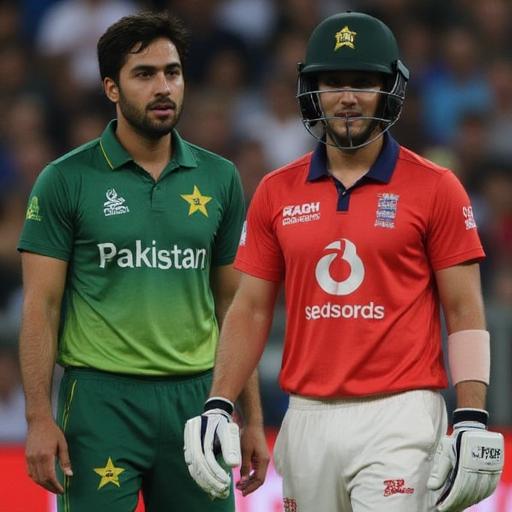Pakistan Cricket Team’s New Captain in 2019 International Cricket

Pakistan Cricket Team’s New Captain in 2019 International Cricket
The year 2019 marked a significant turning point in Pakistan cricket, a pivotal moment that saw the reins of leadership being passed onto a new captain. This shift, like any significant change in leadership, brought with it anticipation, speculation, and a desire to understand the impact it would have on the team’s performance. Understanding the nuances of this change requires a deep dive into the context of the time.
Click here to learn more about Pakistan’s cricketing journey through the turbulent and triumphant years!
The Context: A Year of Transition
2019 was a year of significant transition for Pakistan cricket. The team had experienced a fluctuating period in the recent past, marked by both victories and setbacks. Understanding the dynamics within the team, the coaching staff, and the overall atmosphere was crucial for evaluating the implications of the captaincy change. The team’s performance heading into 2019 had its ups and downs, impacting the selection process considerably. Fans were eager to see how this new leadership would affect the team’s approach to the game.
The question of who would take the helm was a hot topic of discussion among fans and experts alike. The anticipation of a new era in Pakistani cricket hung heavy in the air.
The Rise of the New Captain: A Journey to the Helm
While the specific details surrounding the captaincy selection are sometimes obscured by the complexities of team dynamics, it’s important to recognize the journey that brought this individual to the helm. Their experience in the game, their tactical acumen, and their leadership qualities played a significant role in their appointment. We must remember that cricket is a team sport, and the decision isn’t simply about individual merit. It’s about understanding what style of leadership is best suited to the current roster.
Examining past captaincies often provides valuable context, and 2019 was certainly no exception. Past captaincy successes, failures, and the general climate surrounding these were factors to consider. Past captains provided a backdrop against which to evaluate the new appointment, allowing supporters to understand the motivations behind the choice.
Assessing the Impact on Team Performance
Analyzing the team’s performances throughout 2019, post-captaincy change, provides insights into the impact of this leadership transition. Did the new captain bring a different strategic approach? Did the players respond positively to the new style? Did the team’s performance align with expectations, or were there unforeseen challenges? Looking at these factors is crucial for understanding how effective the leadership change was in terms of on-field success. Examining these performances against past records and overall trends helps provide a clearer picture.
The impact wasn’t limited to the field; it extended to the team’s dynamics, player morale, and overall team spirit.
Evaluating the impact requires delving into the specific matches, considering the opposition, and recognizing the variables influencing each game. Did the captain inspire a new sense of camaraderie or create tension? The answers lie in the data and observations from the period.
Beyond the Field: The Legacy of 2019
The appointment of a new captain in 2019 wasn’t merely a change of the armband; it marked a shift in the team’s narrative. The appointment could have reflected a change in the cricketing philosophy or a need for adapting to emerging trends in the sport. The impact of this change, both on and off the field, should be examined. This context is critical for understanding the longer-term implications and how the team evolved over time.
The team’s overall performance during this period offers a rich source of insights, showcasing the challenges faced and the responses developed. Did the team’s success align with the new leadership, or were there other factors at play?
Conclusion: A Turning Point in Pakistan Cricket
The shift in captaincy during 2019 holds significant meaning for Pakistan cricket, reflecting the dynamic nature of sports leadership. Evaluating the impact requires a deep understanding of the context, the players’ responses, and the overall team dynamics during this pivotal period in the team’s history. Understanding the nuances of this change isn’t solely about the wins and losses; it is about examining how the team adapted, how leadership translated into action, and what enduring impact this transition had on the sport in Pakistan. From the perspective of fans and experts, the impact on the team’s reputation, future trajectory, and legacy of this moment can be widely felt and discussed for many years to come.
Pakistan’s cricketing landscape has evolved, and 2019 was a moment of significant growth and development. Learning from this chapter is essential for understanding how to navigate leadership transitions and adapt to the evolving landscape of international cricket. It is vital to consider the factors that led to the captaincy selection in the first place.
The events of 2019 serve as a valuable case study for aspiring cricket leaders and teams worldwide. It highlights the importance of carefully considering the various factors affecting team dynamics when making such crucial decisions.
In conclusion, the 2019 captaincy change was a significant turning point that shaped the future of Pakistan cricket. Its impact was multi-faceted and reverberated through the team’s performance, strategy, and legacy.